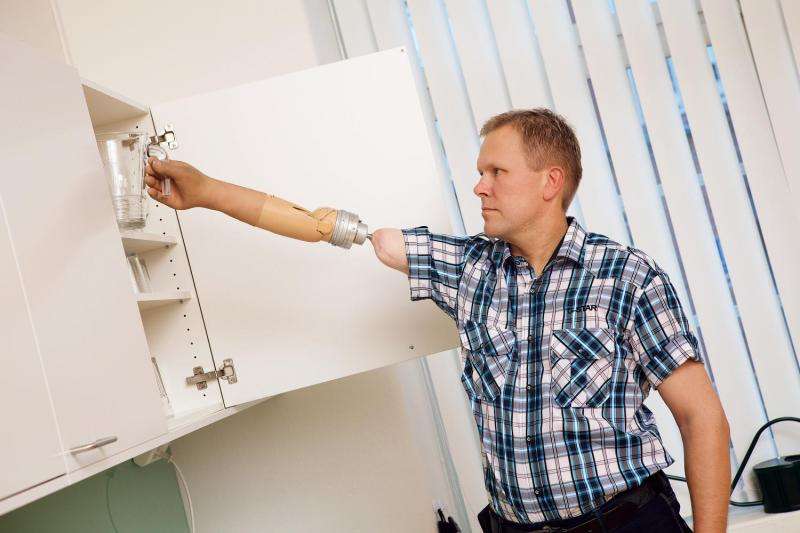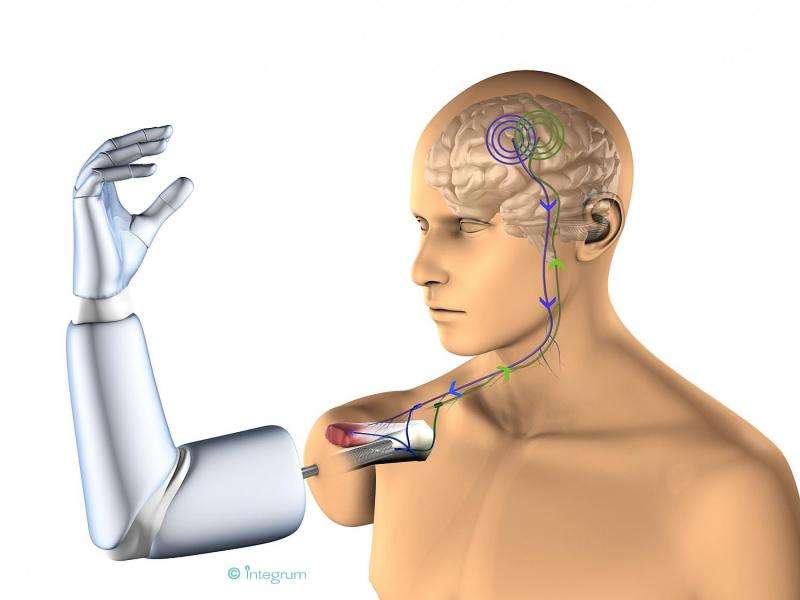First prosthesis with direct connection to bone, nerves and muscles

The first prosthesis in the world that connects directly to the bone, nerves and muscles, allows users to experience sensations, offers free mobility and is controlled via brain/computer interface.
It was created by the Mexican Max Ortiz Catalan, who lives in Sweden. The device becomes an extension of the human body through osseointegration. This means that it connects directly to the bone via a titanium implant, and thanks to the neuronal and muscle binding interfaces, offers a robust and intuitive control of the artificial hand—it is possible to move the limb just by thinking about it.
Ortiz Catalan, who graduated from the Tecnológico de Monterrey, says that Magnus, a patient with an arm amputated above the elbow, is the first person to use technology and, since 2013, it has allowed him to develop a normal working life, return to his job as an operator of heavy machinery on the border between Sweden and Finland, and even manipulate an egg without breaking it.
Ortiz Catalan says that electrodes connected to muscles and nerves generate stable signals that allow precise control, so the patient can handle small and delicate items without damage. It also provides the same sensations as his own hand and is protected from interference such as sensors in retail stores.

The research was conducted at Chalmers Technological University in Gothenburg, Sweden, in collaboration with the Sahlgrenska University Hospital, and the implant company Integrum AB, which works with bone anchoring prosthetics.
Setting up
The device consists of two parts, an implant and a prosthesis. The first part requires surgery in which a titanium piece is implanted into the bone and a control system that connect electrodes to the muscles and nerves is installed.
The second is a removable prosthesis that maintains a mechanical connection with the bone and an electrical connection with the implanted electrodes. This robotic component can be removed so the patient can swim or bathe.
About 400 people worldwide already have a titanium implant, but only two have the system of electrodes implanted in nerves and muscles. It is expected that more than 10 patients receive the neural control system this year.
New technology
Osseointegration of technology does not cause the inflammation problems, chafing or discomfort of conventional prostheses. "Prosthetics strongly press the stump, and it feels like having shoes half a size to small, which is not comfortable. However, with a direct connection to the bone and the lack of components that disturb the skin, the ease of use increases considerably, as well as the quality of life."
In addition, the titanium implant allows the bone to grow around it and bind between them. This is not possible with other materials such as stainless steel, which generates a reaction of encapsulation and creates mechanical instability.
The titanium implant to anchor the prosthesis to the bone is only available in Europe, Australia, Chile and the United States, but agreements are being sought to develop it in Mexico.
"We aim to make technology that people can use in their daily activities, and we would like it to become a standard treatment for every amputation. Thus, prices would fall," concludes Dr. Ortiz Catalan.


















